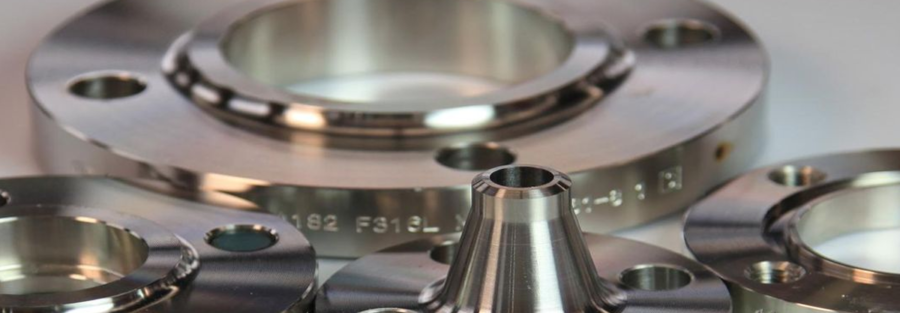What Are Stainless Steel Flanges? Types, Uses & Benefits
When it comes to building safe, reliable, and durable piping systems, stainless steel flanges are essential components. But what exactly are stainless steel flanges, what types are available, and how are they used in various industries? In this guide, we’ll break down everything you need to know about stainless steel flanges — from their definition to their applications and benefits.
What Are Stainless Steel Flanges?
Stainless steel flanges are mechanical components used to connect pipes, valves, pumps, and other equipment in piping systems. They allow for easy assembly, disassembly, inspection, and maintenance. Unlike welded joints, flanges can be unbolted when necessary, making them ideal for systems that require regular servicing.
What sets stainless steel flanges apart from other materials is their superior corrosion resistance, strength, and durability. Manufactured from stainless steel grades like 304, 316, and 321, these flanges perform exceptionally well in environments exposed to moisture, chemicals, and extreme temperatures.
Types of Stainless Steel Flanges
There are several types of stainless steel flanges, each designed for specific piping configurations and pressure requirements. Here are the most common types:
1. Weld Neck Flanges
- Feature a long tapered hub
- Welded directly to the pipe
- Designed for high-pressure, high-temperature applications
- Common in oil and gas, chemical processing
2. Slip-On Flanges
- Slip over the pipe and welded in place
- Easy to install and cost-effective
- Used in low-pressure applications, water lines, and HVAC systems
3. Blind Flanges
- Solid flanges used to block the end of a pipe or valve
- Provide easy access for maintenance and inspection
- Ideal for pressure testing and system isolation
4. Socket Weld Flanges
- Designed for small-diameter, high-pressure piping
- The pipe is inserted into a socket and fillet welded
- Common in chemical and hydraulic systems
5. Threaded Flanges
- Feature internal threads that connect to pipes with matching external threads
- No welding required
- Used in low-pressure applications where welding is not feasible
6. Lap Joint Flanges
- Work with a stub end that is welded to the pipe
- The flange itself is not welded, making it easy to rotate and align bolt holes
- Used in systems that require frequent dismantling
Common Stainless Steel Grades for Flanges
- 304 Stainless Steel: Excellent for general-purpose use, good corrosion resistance
- 316 Stainless Steel: Higher corrosion resistance, especially in marine and chloride environments
- 321 Stainless Steel: Stabilized grade for high-temperature applications
Uses of Stainless Steel Flanges
Stainless steel flanges are widely used across multiple industries thanks to their strength, corrosion resistance, and versatility. Common applications include:
1. Oil & Gas Industry
- High-pressure pipelines
- Offshore platforms
- Refineries
2. Chemical Processing Plants
- Pipes carrying corrosive chemicals
- Reactors and processing equipment connections
3. Food & Beverage Industry
- Hygienic piping systems for dairy, beverages, and food production
- Easy-to-clean systems meeting FDA and sanitary standards
4. Pharmaceutical Industry
- High-purity piping systems
- Clean-in-place (CIP) and sterilize-in-place (SIP) equipment
5. Water Treatment Plants
- Corrosion-resistant connections in fresh and saltwater systems
- Desalination plants and wastewater treatment facilities
6. Power Generation
- High-temperature and high-pressure steam lines
- Nuclear power plant systems
Benefits of Stainless Steel Flanges
1. Corrosion Resistance
The most significant benefit of stainless steel flanges is their ability to resist corrosion from moisture, chemicals, and harsh environments. This leads to longer service life and lower replacement costs.
2. Strength and Durability
Stainless steel flanges can withstand high-pressure and high-temperature conditions, making them suitable for the most demanding industrial applications.
3. Low Maintenance
Due to their resistance to rust and wear, stainless steel flanges require minimal maintenance compared to other materials like carbon steel.
4. Temperature Resistance
Stainless steel can endure extreme temperature fluctuations without losing strength or structural integrity.
5. Hygienic and Easy to Clean
For industries like food, beverage, and pharmaceuticals, stainless steel flanges are essential thanks to their smooth surfaces and easy-to-clean properties.
6. Long-Term Cost Savings
While the initial cost of stainless steel flanges may be higher than carbon steel, the reduced maintenance, longer lifespan, and lower replacement frequency result in significant long-term savings.
Stainless steel flanges play a critical role in industrial piping systems, offering a combination of strength, corrosion resistance, and reliability. Whether you’re working on a high-pressure oil pipeline, a food processing plant, or a pharmaceutical facility, choosing the right type of stainless steel flange ensures safety, performance, and longevity.
Need Help Selecting Stainless Steel Flanges?
If you’re unsure which type of stainless steel flange is best for your project, our experts are ready to help. Contact us today for technical assistance, product recommendations, and competitive pricing.



